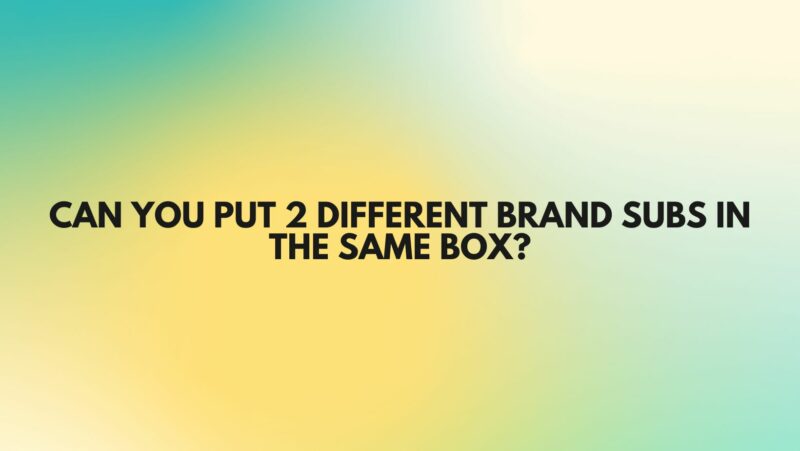When it comes to building a custom subwoofer enclosure for your car audio or home theater system, you may wonder if it’s acceptable to use subwoofers from different brands in the same enclosure. This question arises because various subwoofers have unique specifications and design characteristics that can affect how they perform when combined. In this comprehensive article, we will explore whether it’s advisable to mix subwoofers from different brands in the same enclosure and what factors to consider if you decide to do so.
Compatibility and Matching
Subwoofers are designed by manufacturers with specific specifications and characteristics in mind. These specifications include parameters like the driver’s size, power handling, impedance, and frequency response. Mixing subwoofers from different brands in the same enclosure can present challenges because these specifications may not match.
1. Impedance Matching
One crucial consideration when mixing subwoofers is impedance matching. Subwoofers typically come in different impedance ratings, such as 4 ohms or 8 ohms. When connecting subwoofers in parallel or series, their combined impedance affects the load seen by the amplifier. If the impedance values of the two subwoofers differ significantly, it can lead to an uneven power distribution between them, potentially damaging the subwoofers or the amplifier.
2. Power Handling Compatibility
Another critical factor is power handling capacity. Subwoofers have different power ratings, indicating the amount of power they can handle without distortion or damage. Combining subwoofers with significantly different power handling capabilities can result in one subwoofer being overpowered while the other is underutilized. This can lead to imbalanced bass response and potentially damage the weaker subwoofer.
3. Frequency Response and Design
Subwoofers are designed with specific enclosure types and intended applications in mind. Different brands may employ unique design principles that affect their performance in various enclosure types. Mixing subwoofers from different brands may lead to inconsistencies in bass response, making it challenging to achieve a smooth and balanced sound.
4. Matching Enclosure Types
Subwoofers are often designed for either sealed or ported enclosures. Mixing subwoofers from different brands in a single enclosure may lead to suboptimal performance if the enclosure type is not suitable for both. Each subwoofer may require a different enclosure design to perform optimally, making it challenging to achieve the desired sound quality.
Custom Crossovers and Equalization
If you decide to mix subwoofers from different brands, you may need to invest in custom crossovers and equalization equipment to balance the output of each subwoofer. This can add complexity and cost to your setup, potentially requiring the expertise of an audio professional to achieve the desired results.
Conclusion
While it is technically possible to put two different brand subwoofers in the same enclosure, it is generally not advisable due to the potential challenges related to impedance matching, power handling, frequency response, and enclosure compatibility. Mixing subwoofers from different brands can lead to imbalanced bass response and may require additional equipment and adjustments to achieve satisfactory results.
If you are considering using multiple subwoofers, it is often recommended to choose subwoofers from the same brand and series, as they are more likely to be designed to work together seamlessly. Before attempting such a setup, consult with audio professionals or conduct thorough research to ensure that the subwoofers are compatible and that the resulting sound quality meets your expectations.


